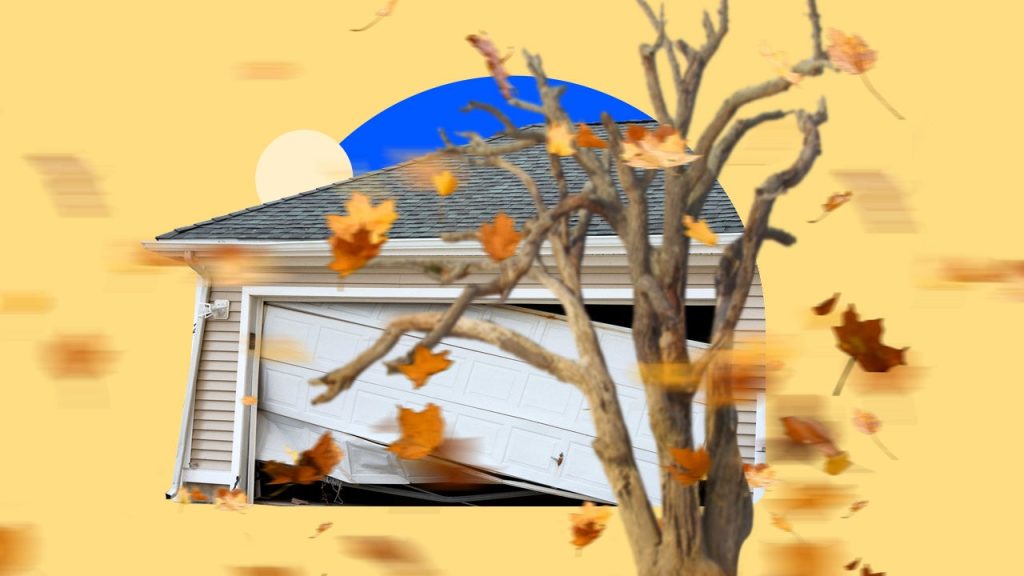A home insurance policy provides valuable protection for your finances if your property and personal belongings are damaged or destroyed due to a covered loss like a fire, severe storm or break-in. As of 2023, data show that 88 percent of homeowners have an active home insurance policy.
Unlike auto insurance, home insurance is not required by law. However, many mortgage lenders require customers to obtain coverage. The cost of home insurance is dependent on a variety of personal factors like your location, the cost to rebuild your home and your claims history. Getting quotes from multiple home insurance providers can help you find the cheapest policy for your situation.
The latest statistics on homeowners insurance claims
Homeowners insurance claim statistics tell a compelling story about the importance of home insurance in the United States. Data also highlight the many factors that influence the type and frequency of claims in different parts of the country.
Recent home insurance claims statistics
- According to a study, 5.5% of all insured homes had a claim in 2022. (Insurance Information Institute [Triple-I])
- Only about 47% of homeowners said they prepared an inventory of their personal belongings to help document losses, according to a 2023 report. (Triple-I)
- Bankrate’s 2023 Extreme Weather Survey indicated that 57% of U.S. adults have incurred costs due to extreme weather events over the past 10 years, such as hurricanes, tornados, wildfires, earthquakes, flooding or heavy snow. (Bankrate)
- Between 2018 and 2022, the average property damage claim payout was $15,747. Fire and lightning claims had the highest average payout: $83,991. (Triple-I)
- 57% of U.S. adults believe climate, extreme weather events and the environment will have a negative effect on their personal finances in the next 10 years, according to Bankrate’s 2023 Extreme Weather Survey. (Bankrate)
- While liability insurance claims are rare (making up just 0.09% of all homeowners insurance claims), they often have higher payouts than property damage claims. Between 2018 and 2022, the average liability insurance claim payout was $26,175. (Triple-I)
What are the most common causes of homeowners insurance claims?
Property damage claims are the most common type of home insurance loss. In 2022 (the most recent data available), wind and hail claims were the most common, followed by water damage and freezing claims. Theft is consistently the least common type of property damage claim. However, the main causes of property loss have fluctuated over the last several years. In the table below, you can see homeowners insurance claims statistics from 2018 to 2022.
| Cause of property loss | 2018 | 2019 | 2020 | 2021 | 2022 |
|---|---|---|---|---|---|
| Wind and hail | 40.5% | 38.3% | 48.3% | 39.8% | 40.7% |
| Fire and lightning | 25.4% | 21.1% | 21.1% | 23.3% | 21.9% |
| Water damage and freezing | 24.0% | 29.0% | 19.6% | 23.4% | 27.6% |
| Theft | 1.0% | 1.0% | 0.6% | 0.7% | 0.7% |
| All other property damage | 6.5% | 7.2% | 7.4% | 9.8% | 6.9% |
Source: Triple-I
Home insurance statistics
Some states experience more claims than others. However, as the chart below demonstrates, claim severity has generally been on the rise from 2018 to 2022. This is partially due to an increase in the severity of natural events, such as hurricanes and winter storms.
| Year | Claim severity |
|---|---|
| 2018 | $14,579 |
| 2019 | $14,090 |
| 2020 | $15,053 |
| 2021 | $16,801 |
| 2022 | $18,311 |
Source: Triple-I
Home insurance premiums state by state
The average cost of home insurance in the U.S. is $2,304 per year for $300,000 in dwelling coverage, according to data from Quadrant Information Services. However, the rate you pay could be higher or lower based on your location and other factors.
For example, homeowners in Southern states generally pay higher rates due to the increased risk of severe weather. On the other hand, homeowners who live on the West Coast often pay lower rates because weather-related property damage claims are less likely. In the tables below, you can see the average home insurance cost in all 50 states and Washington, D.C., along with the most and least expensive states for coverage.
Home insurance industry trends
The home insurance industry continues to evolve significantly under the pressure of economic fluctuations and escalating climate-related risks. Among the most impactful factors are the challenges faced in states like Florida and California, where the risk of natural disasters has led to substantial changes in the insurance landscape. More recently, homeowners in Texas are also facing fewer home insurance options due to an increase in hurricanes and winter storm damage.
In Florida, a combination of high litigation costs and an increased frequency of severe storms has compelled many insurance companies to withdraw from the state. Heavily impacted by lawsuits, insurance companies like United Insurance Holdings Corp., Southern Fidelity and Weston Property & Casualty have pulled out or gone into liquidation. These departures have left homeowners scrambling for coverage amid skyrocketing premiums.
In California, similar challenges have emerged, largely due to the state’s severe wildfire risk. In recent years, heightened wildfire activity and rising construction costs have pushed major insurers like State Farm, Allstate and Farmers to limit new homeowner policies. The situation is exacerbated by Proposition 103, which restricts how much insurers can raise rates, further complicating their ability to adjust to increasing risks.
In Texas, an increase in natural disasters, particularly hurricanes, is causing some insurance companies to flee the state. Foremost and Progressive have both stopped issuing new homeowners policies in 2024. The companies are also halting renewals of existing policies, telling existing customers that their coverage will end at the end of their current term.
Despite the retreat of some insurers from high-risk states, new companies have stepped in to fill the void. In Florida, recent approvals for six new companies to take on policies from the state-run Citizens Insurance indicate a dynamic shift, suggesting that while the market faces difficulties, it also offers opportunities for new entrants. Meanwhile, in California, adjustments are being considered to allow insurers to use modern wildfire risk models to set rates, which could entice insurers to return or expand their offerings in the state.
The challenges in the home insurance markets of Texas, California and Florida are indicative of broader trends that could reshape the national landscape of property insurance. As major insurers recalibrate their strategies to manage risks associated with climate change and regulatory environments, other states could experience similar shifts. This could lead to an increase in market volatility, with potential spikes in premiums and shifts in policy availability across the U.S.
Additionally, the responses from state governments and insurers in places like California and Florida could serve as models for other regions facing similar issues, possibly leading to significant changes in national insurance regulations and market practices. As these states navigate unique challenges, their experiences may well set precedents for how insurers and policymakers nationwide approach the growing risks associated with natural disasters and economic shifts in the home insurance sector.
Average homeowners insurance cost by company
Although home insurance premiums are largely based on personal factors, rates will also depend on your home insurance company. Average rate data show that some home insurance providers have lower rates than other insurers. This is why it’s important to get quotes from multiple companies before choosing a provider. Below, you can see the average cost of home insurance from some of the biggest and most reputable carriers in the industry.
| Insurance company | Average annual premium for $300K dwelling coverage |
|---|---|
| Allstate | $2,289 |
| American Family | $1,698 |
| Auto-Owners | $1,696 |
| Chubb | $3,567 |
| Erie Insurance | $1,871 |
| Farmers | $2,672 |
| Nationwide | $1,772 |
| State Farm | $1,984 |
| Travelers | $2,448 |
| USAA | $1,451 |
Of course, the actual premium for any home insurance policy can vary significantly from the average cost based on myriad factors. On the plus side, discounts may be available depending on individual circumstances and the company you choose.
Frequently asked questions
Methodology
Bankrate utilizes Quadrant Information Services to analyze November 2024 rates for all ZIP codes and carriers in all 50 states and Washington, D.C. Quoted rates are based on married male and female homeowners with a clean claim history, good credit and the following coverage limits:
- Coverage A, Dwelling: $300,000
- Coverage B, Other Structures: $30,000
- Coverage C, Personal Property: $150,000
- Coverage D, Loss of Use: $60,000
- Coverage E, Liability: $500,000
- Coverage F, Medical Payments: $1,000
The homeowners also have a $1,000 deductible, a $500 hail deductible and a 2 percent hurricane deductible (or the next closest deductible amounts that are available) where separate deductibles apply.
These are sample rates and should be used for comparative purposes only. Your quotes will differ.
Read the full article here










